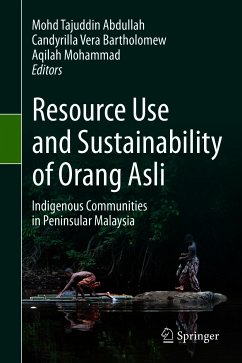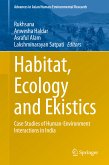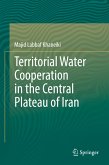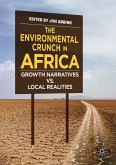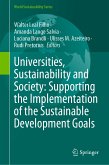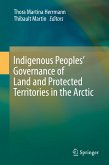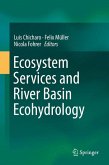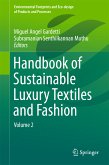Resource Use and Sustainability of Orang Asli (eBook, PDF)
Indigenous Communities in Peninsular Malaysia
Redaktion: Abdullah, Mohd Tajuddin; Mohammad, Aqilah; Bartholomew, Candyrilla Vera


Alle Infos zum eBook verschenken

Resource Use and Sustainability of Orang Asli (eBook, PDF)
Indigenous Communities in Peninsular Malaysia
Redaktion: Abdullah, Mohd Tajuddin; Mohammad, Aqilah; Bartholomew, Candyrilla Vera
- Format: PDF
- Merkliste
- Auf die Merkliste
- Bewerten Bewerten
- Teilen
- Produkt teilen
- Produkterinnerung
- Produkterinnerung

Hier können Sie sich einloggen

Bitte loggen Sie sich zunächst in Ihr Kundenkonto ein oder registrieren Sie sich bei bücher.de, um das eBook-Abo tolino select nutzen zu können.
Comprising of 18 sub-ethnic groups the indigenous communities, or better known as the Orang Asli, located in the Peninsular Malaysia, is a unique community in terms of their culture, lifestyle, and heritage. The life of the Orang Asli, popularly referred to as the Forest People, is highly intertwined with forest resources which makes the community a great source of information and traditional knowledge, particularly in the use of medicinal plants.
This book covers three important issues to explain and gain insights into the sustainability of the Orang Asli:
Social and demographics |…mehr
- Geräte: PC
- ohne Kopierschutz
- eBook Hilfe
- Größe: 13.74MB
![Habitat, Ecology and Ekistics (eBook, PDF) Habitat, Ecology and Ekistics (eBook, PDF)]() Habitat, Ecology and Ekistics (eBook, PDF)97,95 €
Habitat, Ecology and Ekistics (eBook, PDF)97,95 €![Territorial Water Cooperation in the Central Plateau of Iran (eBook, PDF) Territorial Water Cooperation in the Central Plateau of Iran (eBook, PDF)]() Majid Labbaf KhaneikiTerritorial Water Cooperation in the Central Plateau of Iran (eBook, PDF)40,95 €
Majid Labbaf KhaneikiTerritorial Water Cooperation in the Central Plateau of Iran (eBook, PDF)40,95 €![The Environmental Crunch in Africa (eBook, PDF) The Environmental Crunch in Africa (eBook, PDF)]() The Environmental Crunch in Africa (eBook, PDF)73,95 €
The Environmental Crunch in Africa (eBook, PDF)73,95 €![Universities, Sustainability and Society: Supporting the Implementation of the Sustainable Development Goals (eBook, PDF) Universities, Sustainability and Society: Supporting the Implementation of the Sustainable Development Goals (eBook, PDF)]() Universities, Sustainability and Society: Supporting the Implementation of the Sustainable Development Goals (eBook, PDF)105,95 €
Universities, Sustainability and Society: Supporting the Implementation of the Sustainable Development Goals (eBook, PDF)105,95 €![Indigenous Peoples' Governance of Land and Protected Territories in the Arctic (eBook, PDF) Indigenous Peoples' Governance of Land and Protected Territories in the Arctic (eBook, PDF)]() Indigenous Peoples' Governance of Land and Protected Territories in the Arctic (eBook, PDF)81,95 €
Indigenous Peoples' Governance of Land and Protected Territories in the Arctic (eBook, PDF)81,95 €![Ecosystem Services and River Basin Ecohydrology (eBook, PDF) Ecosystem Services and River Basin Ecohydrology (eBook, PDF)]() Ecosystem Services and River Basin Ecohydrology (eBook, PDF)113,95 €
Ecosystem Services and River Basin Ecohydrology (eBook, PDF)113,95 €![Handbook of Sustainable Luxury Textiles and Fashion (eBook, PDF) Handbook of Sustainable Luxury Textiles and Fashion (eBook, PDF)]() Handbook of Sustainable Luxury Textiles and Fashion (eBook, PDF)40,95 €
Handbook of Sustainable Luxury Textiles and Fashion (eBook, PDF)40,95 €-
-
-
This book covers three important issues to explain and gain insights into the sustainability of the Orang Asli:
- Social and demographics
- Sustainability of resource use
- Governance, administration and management
The book presents research to help bridge the gaps and provides a baseline reference for further research regarding the sustainability of the Orang Asli.
This book is intended for researchers and graduate students to help gain an understanding of the Orang Asli. By highlighting the plight of Orang Asli the authors hope that this community will be recognised and become a part of society. More research is required to help the 178,197 Orang Asli achieve the sustainable development goals for their community in the Peninsular Malaysia.
Dieser Download kann aus rechtlichen Gründen nur mit Rechnungsadresse in A, B, BG, CY, CZ, D, DK, EW, E, FIN, F, GR, HR, H, IRL, I, LT, L, LR, M, NL, PL, P, R, S, SLO, SK ausgeliefert werden.
- Produktdetails
- Verlag: Springer International Publishing
- Seitenzahl: 243
- Erscheinungstermin: 30. März 2021
- Englisch
- ISBN-13: 9783030649616
- Artikelnr.: 61381428
- Verlag: Springer International Publishing
- Seitenzahl: 243
- Erscheinungstermin: 30. März 2021
- Englisch
- ISBN-13: 9783030649616
- Artikelnr.: 61381428
- Herstellerkennzeichnung Die Herstellerinformationen sind derzeit nicht verfügbar.
